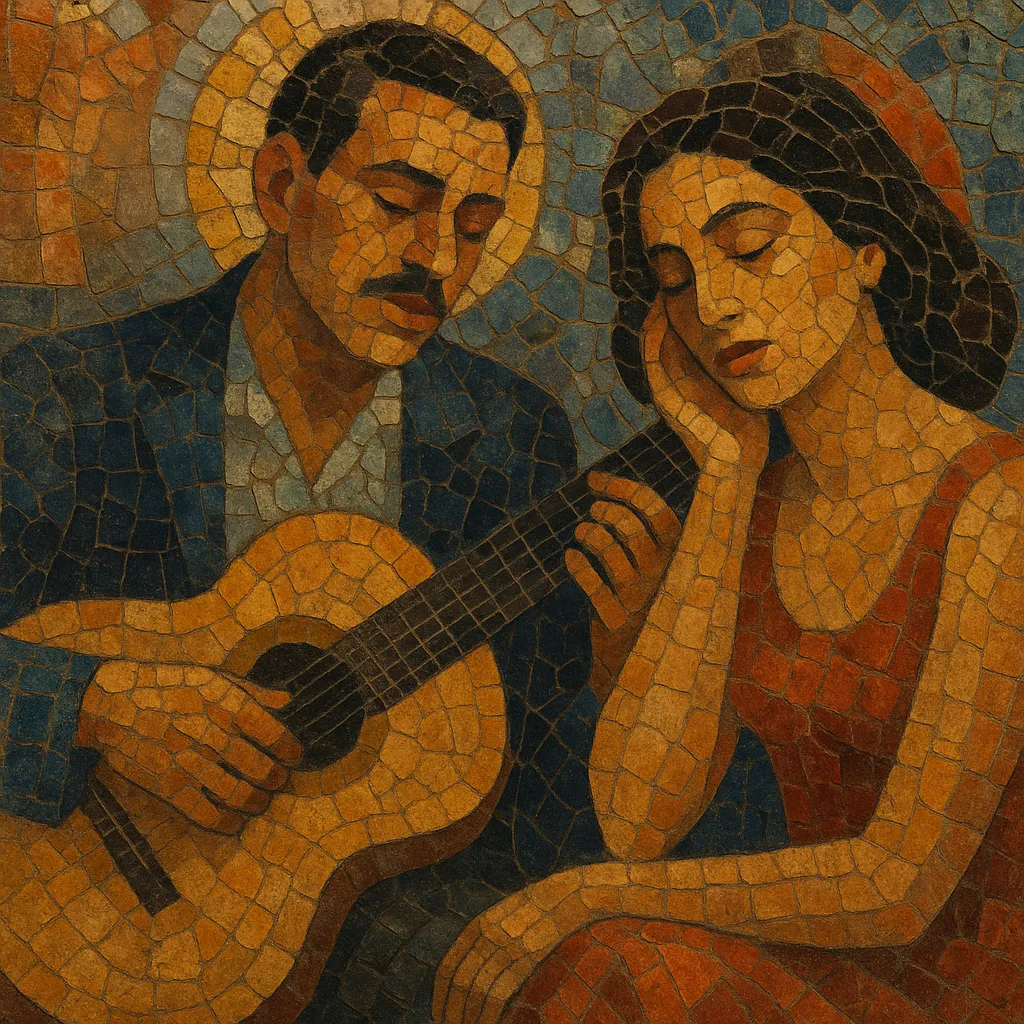Samba-canção is a Brazilian song style that slows down the rhythmic drive of samba and foregrounds a crooning, intimate vocal delivery. It is characterized by sentimental, often bittersweet lyrics (the famed dor-de-cotovelo "broken‑hearted" ethos), lyrical melodies, and harmonically rich progressions that anticipate the sophistication later associated with bossa nova.
Arrangements typically feature voice with piano or guitar, plus subtle percussion and, in many classic recordings, strings or small orchestra. While it retains samba’s syncopated feel, the groove is gentler and more rubato-friendly, favoring mood and storytelling over dancefloor propulsion.
Samba-canção emerged in Brazil in the 1930s as a more intimate, lyrical offshoot of samba. Drawing on the poetic lineage of modinha and the narrative directness of bolero, songwriters began shaping slower, melodically expansive sambas fit for the radio and salon.
The genre flourished on national radio and in Rio de Janeiro’s nightclubs and casinos. Orchestral arrangements, crooning vocal styles, and harmonically sophisticated writing became hallmarks. Artists such as Lupicínio Rodrigues, Orlando Silva, Nora Ney, and Nelson Gonçalves popularized unforgettable torch songs that defined mid‑century Brazilian romanticism.
By the late 1950s, jazz harmony and arranging ideas increasingly colored samba-canção, smoothing a path for bossa nova. Singers like Maysa, Dolores Duran, Dick Farney, and Elizeth Cardoso embodied the refined, introspective aesthetic that bossa would crystallize.
Samba-canção’s emphasis on lyrical nuance, chromatic voice‑leading, and sophisticated harmony directly influenced bossa nova and, more broadly, MPB. Its repertoire remains central to Brazilian songbooks and continues to inform romantic and jazz‑inflected interpretations of samba.


